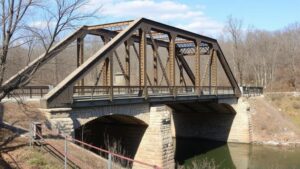Rediscovering Early Scout Trails: Relics Hidden in Unexplored Paths
Rediscovering Early Scout Trails: Relics Hidden in Unexplored Paths
The identification and preservation of early scout trails has increasingly garnered attention among historians, conservationists, and outdoor enthusiasts alike. These pathways, often veiled by time and overgrowth, serve as tangible connections to our past, revealing insights into the movements, motivations, and experiences of those who traversed them. This article investigates the significance of these trails, evaluates methods for their rediscovery, and underscores their importance in cultural heritage and wilderness education.
The Historical Significance of Scout Trails
Scout trails were primarily utilized during exploratory missions and for military purposes. served as the arteries for movement during the westward expansion of the United States in the 19th century. For example, the Lewis and Clark Expedition (1804-1806) charted paths that are now recognized as pivotal to American history. Their journey not only provided valuable data regarding the geography and inhabitants of the regions explored but also established a framework for subsequent trails.
These paths in the wilderness were often used by scouts who assisted military campaigns, such as the trails taken during the Indian Wars or the Civil War. For example, the Smoky Mountain Trail, used by scouts during the American Civil War, showcased navigation techniques that overcame the challenges of rugged terrain.
Rediscovery Methodologies
The rediscovery of early scout trails involves interdisciplinary approaches that integrate historical research, archeological techniques, and modern technology.
Historical Research
To reconstruct the trajectories of past scout trails, historians often rely on primary sources, such as diaries, letters, and government documents. An example includes the journals of explorers which can reveal not only the routes they took but also the environmental and social contexts they encountered. The National Archives and Records Administration holds collections that include such documents, offering a wealth of resource material for researchers.
Archaeological Techniques
Archaeology plays a crucial role in identifying physical remnants of old trails. Techniques such as ground-penetrating radar help uncover buried pathways, while surveying techniques can reveal indicative artifacts. Research conducted in the Appalachian region has uncovered remnants of trails that were previously unrecognized, showcasing the potential buried history still awaiting discovery.
Modern Technology
Advancements in Geographic Information Systems (GIS) have transformed trail rediscovery efforts. GIS allows researchers to layer historical maps over modern landscapes, aiding in trajectory identification. A notable example is the use of GIS to track the Old Spanish Trail, which connected Santa Fe, New Mexico, to Los Angeles, California. These techniques have enabled historians to trace the development of trade routes across vast landscapes.
Case Studies of Rediscovered Trails
Several case studies exemplify the successful rediscovery and preservation of early scout trails, showcasing the methodologies discussed.
The Old San Antonio Road
This historic trail was initially blazed in the early 18th century for missions. In recent years, efforts by the Texas Department of Transportation have illuminated its route, resulting in educational signage and mapping for modern trail users. By incorporating historical data with preservation efforts, this initiative has educated the public about its significance, thereby enhancing community engagement with local history.
Northwest Territory Trails
In the Great Lakes region, recent archaeological surveys have led to the identification of trails used by scouts during the War of 1812. Excavations conducted by archaeologists from Michigan State University have unearthed remnants of campsites and tools along these trails, providing insights into the life and times of the scouts who used them.
The Importance of Preservation and Education
Rediscovering these trails is not merely an academic exercise; it has significant implications for cultural heritage and environmental education. Preserving these pathways fosters a deeper understanding of a regions heritage, while also offering the public opportunities for recreation and education.
Environmental Stewardship
Natural landscapes often harbor these trails, making their preservation integral to environmental conservation efforts. For example, educational programs focused on these trails often highlight their ecological significance, teaching about native flora and fauna, as well as the impact of human activity on landscapes over time.
Community Engagement
Local communities often become involved in trail preservation efforts through volunteer programs. For example, organizations in California work to maintain and promote the historical significance of the California Trail, fostering pride in local history and promoting tourism through hiking and awareness events.
Conclusion and Actionable Takeaways
The rediscovery of early scout trails offers invaluable insights into our past and serves as a reminder of the journeys that have shaped our current landscapes. The methodologies of historical research, archaeological techniques, and technological advancements facilitate this process and highlight the importance of preserving these relics for future generations.
- Conduct historical research to locate and document early scout trails.
- Use archaeological methodologies to uncover physical remnants of trails.
- Leverage GIS technology to map and study trail trajectories effectively.
- Engage local communities in preservation efforts to promote historical awareness.
To wrap up, exploring and preserving early scout trails is crucial for understanding and appreciating the complex history that shaped our present. By applying these methodologies and encouraging community involvement, we can ensure these pathways remain a vital part of our cultural heritage.



